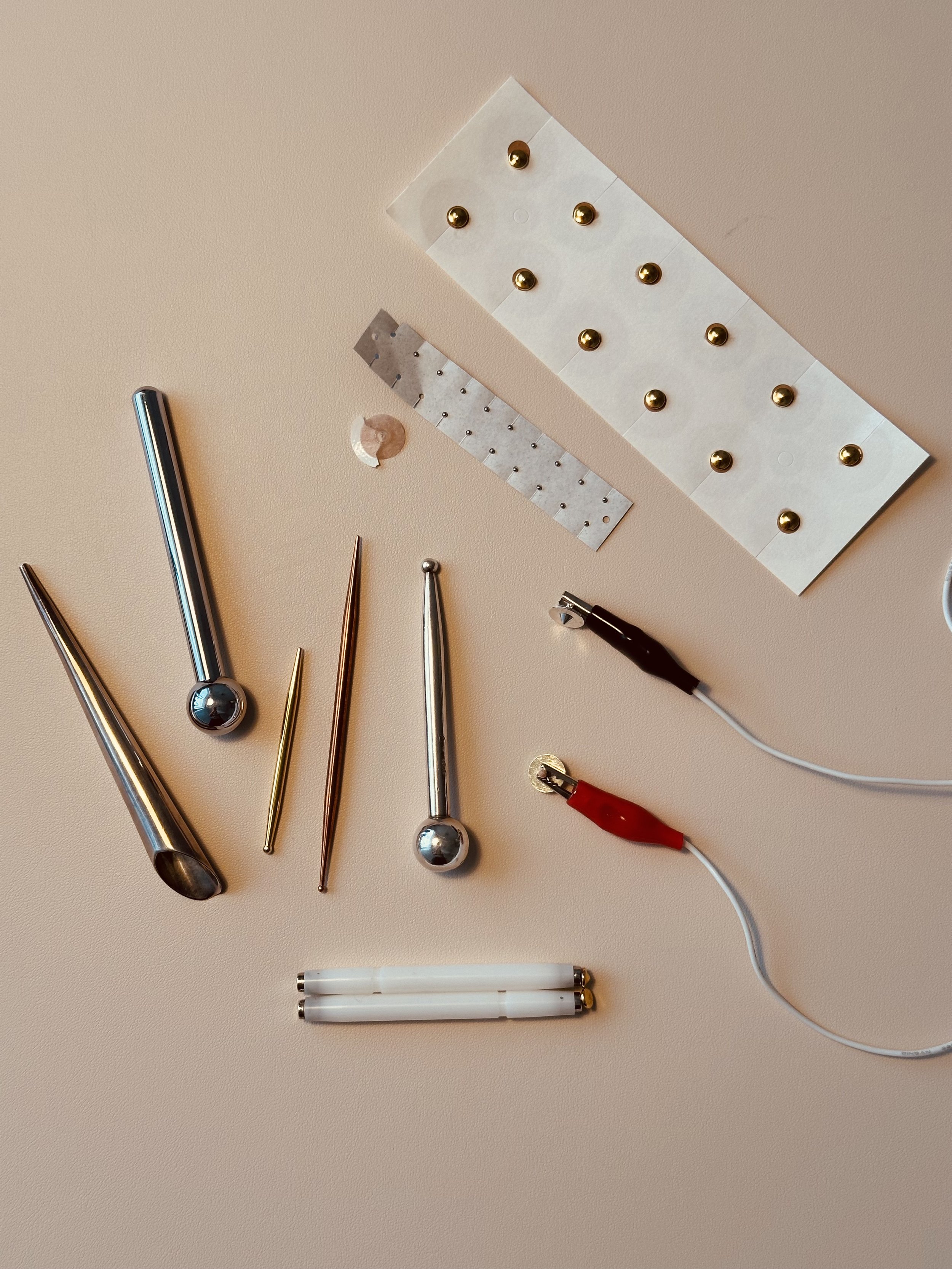
Acupuncture Healing Therapies
Your Acupuncture Session
Depending on what we are treating, your session may involve a mix of Acupuncture techniques, including:
Japanese Acupuncture (Meridian Therapy and Polarity Therapy)
Inserted Acupuncture needles
Cupping
Moxibustion & TPD infra-red heat therapy
Ear Acupuncture, Magnets and leave-in point stimulators.
Scroll down for more information
Acupuncture
Needles (approximately 0.16 thickness) are inserted into Acu-points and retained for 5-20 minutes, promoting deep relaxation and triggering the body’s self healing mechanisms.
Japanese Acupuncture
Japanese Acupuncture techniques are gentle and involve using needles and specialised tools to stimulate the Acu-points and regions of the body. Selection of points is largely palpation based, taking the pulse, touching the Hara (abdomen), and other points of the body.
The treatment can be completely inserted needle-free, making it perfect for Children, sensitive people and those that don’t like the idea of inserted needles.
Your sessions will likely include a combination of both types of Acupuncture.
Moxibustion and Cupping.
Moxibustion is an ancient technique of burning moxa, made from refined Mugwort leaves, on or close to Acu-points. The heat is warming and soothing, promoting circulation and stimulating the body’s self-healing mechanisms. Ceda uses rice-grain Moxa, which creates less smoke (it smells like incense).
When heat needs to be applied to a larger area, Ceda uses an infra-red TPD heat lamp. TPD lamps heat a ceramic plate, embedded with minerals, emitting infra-red similar to that emitted by the human body. Lying under the infra-red heat lamp is deeply relaxing, comforting and energising.
Cupping is a technique that was prevalent in many cultures throughout the world, including China, Egypt, Greece and the Middle East.
The Cups are placed on the body and either left for around 3 minutes, or moved up and down the area. The cupping will be gentle, but will occasionally cause light ‘bruising’. The cups move fluid, stretch the fascia and move blood through tight muscles to help them to relax.
Other techniques like Gua Sha, Electro-Acupuncture, LED and full-spectrum Light Therapy may also be used during your session.
How does Acupuncture work?
The Acupuncture meridian system is a map of the circulation of Qi-energy-vitality within the body. When stimulated, the Acu-points trigger the body’s self-healing mechanisms. Your practitioner will look at your symptoms and signs (pulse, tongue, palpation) to develop an understanding of the Acupuncture healing strategies that may assist your condition.
Much research has been done into the mechanism of Acupuncture from a neuro-biological perspective. Studies have explored the effect of Acupuncture on the Autonomic nervous system (ANS), balancing the Sympathetic and Parasympathetic branches of the ANS, contributing to the relaxation response, and regulating Heart-Rate Variability. Acupuncture may influence the function of nerves (both peripherally, and at the brain and spinal cord level), release the body’s natural pain relieving substances, the endorphins, is anti-inflammatory, modulates neurotransmitters and modulates the immune system.
Read more on the developing science here






